This post is also available in: Italian
Lucchesia, between plains and hills carpeted by olive trees and vines, is one of the richest Italian areas in history, culture, villas and gardens. The prosperous, knowledgeable and profitable economy in the XVI century Republic of Lucca also gave birth to many wonderful noble abodes. Here’s a list of some of the latter, open to the public together with their gardens and parks. They can be visited all year round, although if you liked blooming camellias, you should absolutely go there in the month of March. Those beautiful flowers are, in fact, officially celebrated in the villages of Sant’Andrea di Compito and Pieve di Compito, with the dedicated Antiche Camellie della Lucchesia, exhibition.
The first camellias were imported from China and Japan at the end of the XVIII century and they immediately enjoyed great success as ornamental plants. Their simple cultivation technique sparked the enthusiasm of collectors and hybridizers, especially in Tuscany, where cultivars of great beauty were thus created (soon becoming famous in other Italian regions and also abroad). Planted in the most beautiful villas around Lucca, they also triggered a true “camelliomania”, which reached its peak in the mid-XIX century.
By following our recommendation below, you’ll be able to discover some of the most beautiful garden in this area, as well as nurseries and a couple of artisan shops. For more comprehensive information, please visit Discovering nurseries: Lucchesia. Enjoy yourselves!
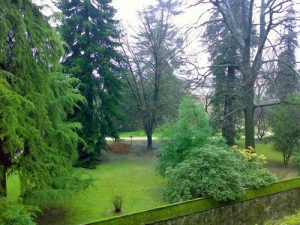
Lucca Botanical Garden : The Municipal Botanical Garden of Lucca is a scientific institution founded in 1820 by Maria Luisa di Borbone and located in the historic centre of town. The garden, which covers about 5 acres, is divided into two large sectors: on one side there are the arboretum, the mound and the pond, on the other, there are the botanical school and the greenhouses. Many interesting activities and events take place here all year round.
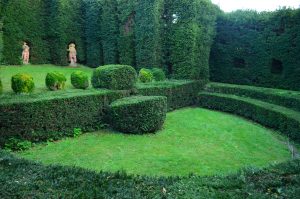
Villa Reale di Marlia: Located some 5 miles from Lucca, the Royal Villa of Marlia is an enchanted place, which has been the residence of noble families and great patrons of art over the centuries.
In March, the park of Villa Reale di Marlia is part of “Antiche Camelie della Lucchesia exhibition”, competing with its avenues which feature more than 30 ancient varieties of camellias – those flowers were originally brought here in the early 1800s by Elisa Baciocchi, the sister of Napoleon Bonaparte and Princess of Lucca.
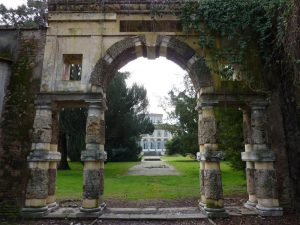
Villa Bottini, in Lucca: Villa Bottini dates back to the XVI century: built by the Buonvisi family, it was later purchased by Elisa Bonaparte, Napoleon’s sister, in the early XIX century. Featuring the shape of a parallelepiped, it is surmounted by a belvedere loggia and has two green spaces of different sizes, enclosed by walls. The ground floor is decorated with a series of frescoes with mythological and allegorical scenes by Ventura Salimbeni; in the basement, there’s the old kitchen and several service rooms.
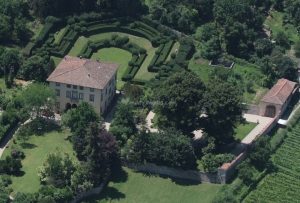
Villa Bernardini, in Vicopelago (LU): Villa Bernardini, in Vicopelago (Lucca), dates back to 1615 and was built by Bernardino Bernardini, one of the most famous politicians of the time, who used it as a summer residence. There are over 350 trees, shrub, bulbous, herbaceous, perennial and annual species belonging to 212 genera of 82 botanical families. Flowering, therefore, alternates throughout the year, always giving life to different shapes, colours and volumes.
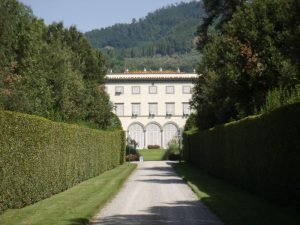
Villa Grabau, in San Pancrazio (LU): Villa Grabau, with its imposing size, is one of the undisputed landmarks on the Lucca hills, about 4 miles north of the city. The villa was built in the early XV century on the remains of an existing structure; in the early XVI century, it was acquired by the powerful Diodati merchants from Lucca, whose coat of arms is still visible, carved on the north entrance of the house. The garden is made of two large oval flower beds, decorated with pots of lemons (Citrus limon), and a high curved hedge of holm oaks (Quercus ilex) placed in the final part – this decoration defines an amphitheatre at the centre of which there’s a large circular basin with a gush of water.
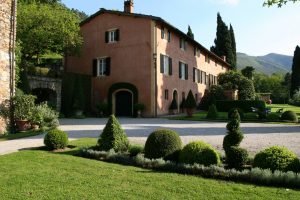
Villa Massei, in Massa Macinaia (LU): Villa Massei in Massa Macinaia, south of Lucca, is an XVII century building that belonged to Count Senibaldi; it is also an example of those very country residences embedded with local agriculture and well cared for from the architectural point of view. That kind of noble abodes is thickly spread over the hills around Lucca and has significantly changed the landscape. The rose garden is home to old roses, such as the fragrant “Cuisse de Nynphe Emule” and the red “Cardinal de Richelieu”, alternated with modern roses produced by the nurseryman David Austin.
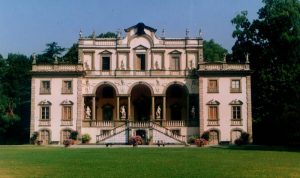
Villa Mansi, in Segromigno in Monte, Capannori (LU): Villa Mansi, in Segromigno in Monte, is one of the greatest expressions of XVII century architecture in Lucca. Already before the XVI century, the Mansi was a family known at the European level in the field of the silk trade and had close relations with several patrician families of Lucca: thanks to them, they were able to purchase Villa di Segromigno in the XVII century. Of the original plant species dating back to the XVII-century, some specimens of oaks and yews can still be seen, as well as some stretches of laurel and box hedges, not to mention a beautiful camellia (Camelia japonica) on the west side of the garden.
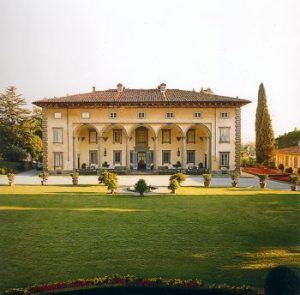
Villa Oliva Buonvisi, in San Pancrazio (LU): Villa Oliva, in San Pancrazio, on the slopes of the Pizzorne plateau, got its name from the Genoese family who became its owner around the first decades of the XX century. However, the history of this estate is very ancient, and its origins can be traced back to the early XV century to Bonviso di Corrado, a German adviser to Emperor Otto III. Scattered throughout the park, there are many other arboreal creations such as a beautiful belvedere covered by arched yews, bordered by a balustrade with columns that opens onto the garden and the surrounding hills. The presence of stone and terracotta statues remind us of the original purpose of this place: a barn owl and a statue of Diana sit in a grove of holm oaks (Quercus ilex), originally planted as a ”ragnaia” (several tall trees fitted with nets to catch small birds).

Villa Torrigiani, in Camigliano Santa Gemma, Capannori (Lu): Villa Torrigiani and its park, dating back to the early XVI century and originally belonging to the Buonvisi family, were eventually purchased by the Marquis Nicolao Santini. The ambassador of the Republic of Lucca to the court of Louis XIV made significant changes, quite obviously inspired the architecture of Versailles. The park and gardens were enriched with sumptuous details: flowered parterres and large pools with surprising water features. Since the XIX century, the park has taken on a much more romantic look with several new specimens of plants from all over the world.
A magnificent avenue of cypresses leads to the majestic Baroque facade of the Villa, inside which the rich original furnishings and decorative frescoes by Pietro Scorzini are still perfectly preserved.

Culturally speaking, Pieve and S. Andrea di Compito can be regarded as the “Borgo delle Camelie” (“Hamlet of Camellias”), a special place that during the “Antiche Camelie della Lucchesia exhibition” weekends offers wondrous sights and mesmerizing walks through the alleys and among ancient houses decorated with vegetable gardens and ancient camellias. The latter first arrived in Italy, from China, at the end of the XVIII century, immediately loved and favoured especially as ornamental plants.
Camellia japonica immediately sparked the enthusiasm of collectors and hybridizers, especially in Tuscany, where cultivars of great beauty were soon created – they became extremely famous also in other parts of Italy and abroad. Borgo delle Camelie comes alive during March weekends thanks to the Exhibition of the Ancient Camellias of the Lucchesia, and visits to several beautiful villas decorated with camellias, like Villa Borrini in Sant’Andrea di Compito, Villa Giovannetti, Villa Orsi, and Villa Di Vecchio, in Pieve.
This post is also available in: Italian


Leave a Reply